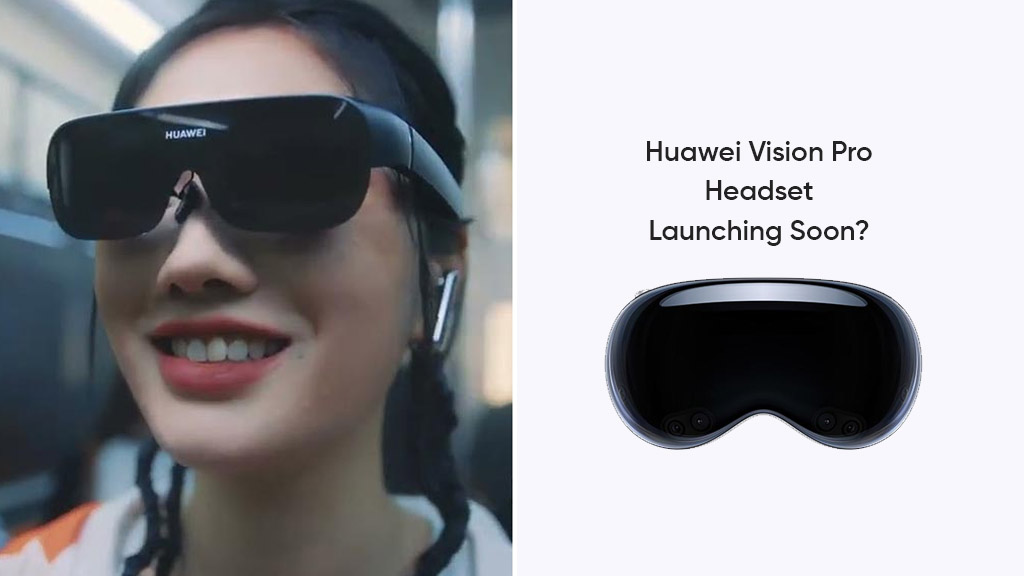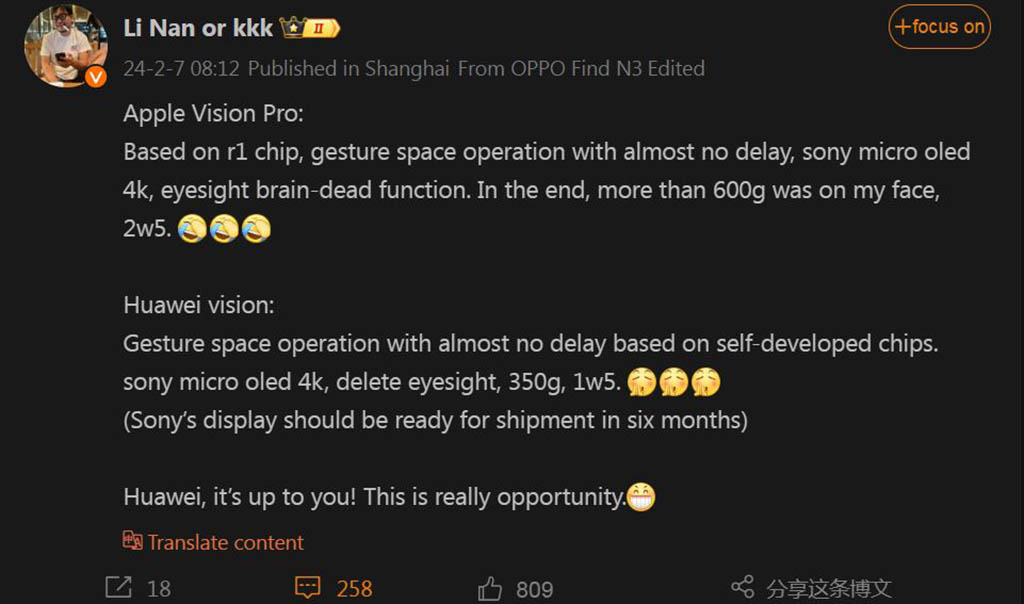Huawei
Huawei reportedly plans to launch Vision headset at half price of Apple Vision Pro

New reports suggest that Huawei is planning to launch a brand-new Vision headset, giving a tough fight to Apple in the Virtual Reality race. Eventually, the Chinese tech giant is looking into every segment while focusing on the smartphone business.
The former marketing director of Meizu -Li Nan recently shared a post on Weibo and shed some light on the alleged Apple and Huawei Vision headset that could launch later this year. The Chinese firm is likely to name it ‘Vision Pro’.
Notably, Huawei trademarked this name in China in 2019. The name also covers multiple products like smart TVs and Glasses. Perhaps, the American tech maker might switch to a new name, when launching its VR headset device in China.
Speaking of the parameters, Li Nan described the specs for both Apple and Huawei’s headset display. To begin with, Huawei Vision Pro may obtain a Sony micro-OLED 4K display with a gesture-based control system at no time delay.
On the flip side, Huawei could use its own chipsets to power up the new VR headset. Unlike Apple, the device may not support the EyeSight feature but, it would weigh 350 grams which is almost half of Apple’s Vision Pro. Moreover, the price would be 15000 yuan, again half of Apple’s product.

Meanwhile, the Apple Vision Pro might equip an R1 chipset with Sony micro-LED with 4K resolution. It will further support the EyeSight capability with a weight of 600 grams.
Huawei Vision Pro: Launch?
Looking into the post, Li has not mentioned the release timeline for the new Huawei Vision Pro headset. However, he noted that the Sony firm will take around six months to ready its screen and ship to manufacturers. Thus, we can expect the official unveiling by the end of this year.
Huawei Vision Glass:
Huawei also has a virtual screen Vision Glass which uses air capsule and nose pads that users can adjust in three different positions as per their convenience. It uses dual Micro OLED screens with a single screen size of 0.49 inches, and a binocular HD resolution (1920 x 1080 pixels).
(Source)






